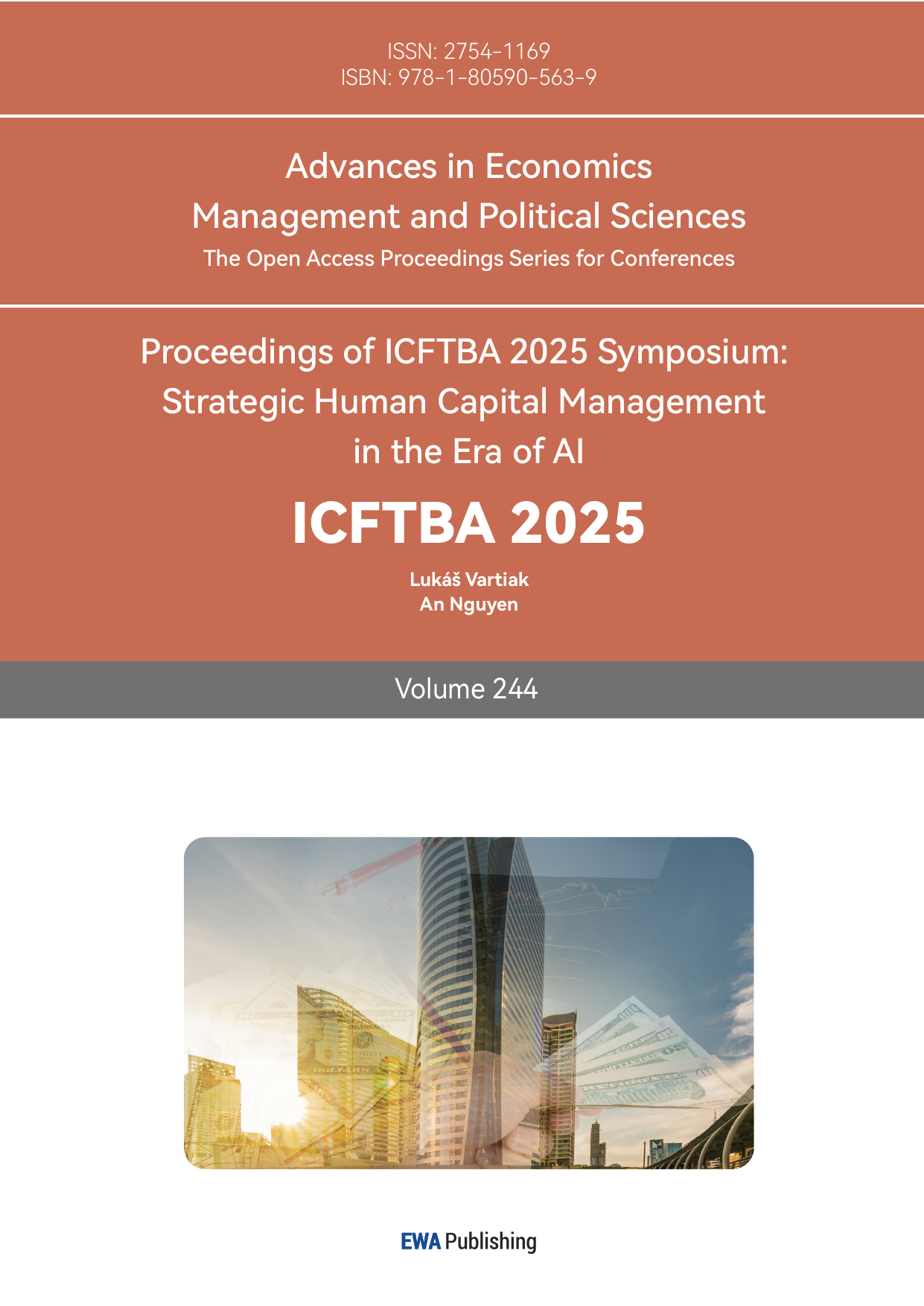References
[1]. Statista. (2023). Market size of the global metaverse luxury goods industry. Statista Research Department. https: //www.statista.com/statistics/1295503/metaverse-luxury-goods-market-size/
[2]. Business of Fashion. (2022). How luxury brands are using the metaverse. The Business of Fashion. https: //www.businessoffashion.com/articles/technology/how-luxury-brands-are-using-the-metaverse
[3]. Deloitte. (2023). Global Powers of Luxury Goods 2023. Deloitte Insights. https: //www2.deloitte.com/global/en/pages/consumer-business/articles/gx-global-powers-of-luxury-goods.html
[4]. Gucci. (2021). Gucci Garden on Roblox – A virtual exhibition. Gucci Official. https: //www.gucci.com/us/en/st/stories/article/gucci-garden-roblox
[5]. Veblen, T. (1899). The theory of the leisure class. Macmillan. https: //doi.org/10.4324/9781315125215
[6]. Kapferer, J. N., & Bastien, V. (2012). The luxury strategy: Break the rules of marketing to build luxury brands. Kogan Page. https: //doi.org/10.4324/9781470993750
[7]. Wiedmann, K. P., & Hennigs, N. (2020). Luxury marketing in the age of digital transformation: Building customer value through authentic experiences. Journal of Brand Management, 27(6), 665–678.
[8]. Ko, E., & Megehee, C. M. (2022). Luxury branding in the digital era: Understanding symbolic value creation through online engagement. International Journal of Market Research, 64(3), 345–362.
[9]. Wang, Y., Yu, C., & Fesenmaier, D. R. (2002). Defining the virtual tourist experience. Tourism Management, 23(4), 407–417. https: //doi.org/10.1016/S0261-5177(01)00094-6
[10]. Belk, R. W. (1988). Possessions and the extended self. Journal of Consumer Research, 15(2), 139–168.
[11]. Bourdieu, P. (1986). The forms of capital. In J. Richardson (Ed.), Handbook of Theory and Research for the Sociology of Education (pp. 241–258). Greenwood Press.
[12]. Pantano, E., Pizzi, G., Scarpi, D., & Dennis, C. (2021). Competing during a pandemic? Retailers’ ups and downs during the COVID-19 outbreak. Journal of Business Research, 116(1), 209–213.
[13]. PwC. (2022). Seeing is believing: How virtual reality and augmented reality are transforming business and the economy. PwC.https: //www.pwc.com/gx/en/industries/technology/publications/seeing-is-believing.html
[14]. Han, Y. J., Nunes, J. C., & Drèze, X. (2010). Signaling status with luxury goods: The role of brand prominence. Journal of Marketing, 74(4), 15–30. https: //doi.org/10.1509/jmkg.74.4.15
[15]. Turunen, L. L. M., & Laanti, R. (2017). Immortal luxury: The role of brands in the digital consumption of luxury. Journal of Business Research, 77, 146–153. https: //doi.org/10.1016/j.jbusres.2017.04.023
[16]. Venkatesh, V., Thong, J. Y. L., & Xu, X. (2012). Consumer acceptance and use of information technology: Extending the unified theory of acceptance and use of technology. MIS Quarterly, 36(1), 157–178.
[17]. Kim, J., & Johnson, K. K. P. (2016). Power of consumers using social media: Examining the influences of brand-related user-generated content on brand relationships and purchase intentions. Computers in Human Behavior, 58, 98–108. https: //doi.org/10.1016/j.chb.2015.05.002



